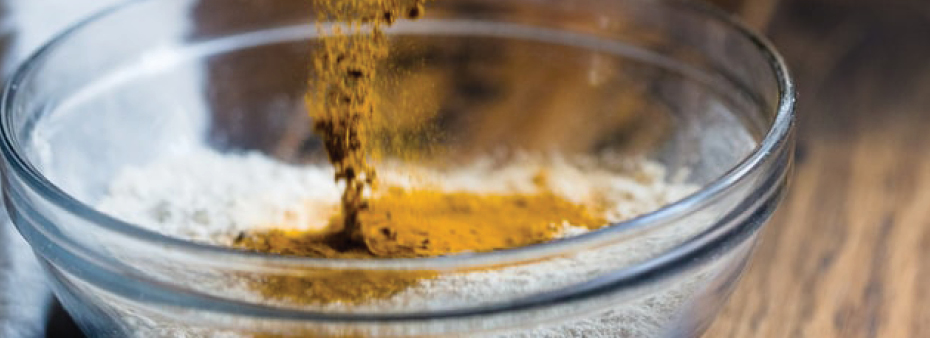There has been a lot of buzz around “bioavailability” lately, especially as it concerns dietary supplement ingredients like fish oil, CoQ10, and phytonutrients like curcumin and resveratrol. However, much of what is marketed as having increased bioavailability rarely translates into meaningful therapeutic improvements, especially when it comes to phytonutrients.* This is primarily because phytonutrient research has mostly followed the same path used for developing drugs, which focuses on single compounds discovered through in vitro activity screening methods.
Through these assays, they discover the concentration needed for the compound’s activity in cell culture, which then becomes the target serum concentration when delivering the drug/nutrient to patients. In this model, it is assumed that a very active compound with poor bioavailability can be therapeutically improved simply by modifying it to increase its absorption. However, this is often confounded by several biological obstacles.
These obstacles became obvious to me after carefully evaluating the research on numerous different “bioavailability-enhanced” curcumin products over the past few years. While most of these enhancements indeed increased the absorption of curcumin in the blood, none appeared to significantly enhance the therapeutic benefits of curcumin much at all. Ironically, while there have been many publications touting the increased absorption of these compounds, these same researchers were not brave enough to test their products, head-to-head, for therapeutic outcomes (or brave enough to publish the results if they did the study). This made me suspicious that something was amiss, and others had the same suspicions.1
My research has led me to a variety of plausible reasons for this conundrum, most of which had to do with the misapplication of the term “bioavailability.” In essence, bioavailability describes the ability to deliver the bioactive ingredient to the cellular target at a dose that creates a biological activity. When a product is taken orally, this can be thwarted by poor absorption, unexpected metabolisms to other compounds, deactivation of the compound (i.e., detoxification), accumulation in a non-target tissue, or unexpected toxicity which reduces the incoming dose.
For the most part, modifying curcumin to increase its absorption through the gut (into the serum) is not the same thing as increasing bioavailability. In fact, when curcumin is shuttled into the blood using various chemical enhancement, it generates two therapeutic challenges. The first is that rapid absorption of curcumin leads to rapid detoxification, which converts nearly all the newly absorbed curcumin to inactive conjugated compounds. The second is that compounds optimized for rapid absorption into the serum are likely to reduce curcumin’s interface with the cells within the gut (both human and microbial).
It was upon reading a paper—Could the gut microbiota reconcile the oral bioavailability conundrum of traditional herbs?—that I realized that the whole concept of bioavailability must be reevaluated.2 What if the human cells in petri dishes used to screen drugs for biological activity are only surrogates for the secondary targets of phytonutrients, while the gut microbiota are the primary therapeutic targets? It was at that point I discovered the vast amount of recent attention this question has been getting, curcumin and many other phytonutrients have significant bioactivity in the gut, much of which is mediated by the gut microbes.3-6
In other words, not only should we be rethinking the target of phytonutrient therapy, we must take into consideration how these phytonutrients are modified by the gut microbiota, creating new compounds and signals within the body, something our in vitro assays can’t account for.
So, while bioavailability is still an important therapeutic variable, how it is defined and evaluated must go through a radical reevaluation. No longer can we ignore the gut microbiome and its metabolic activity by defining bioavailability as a simple measurement of human serum concentrations; in fact, the gut microbiota might actually be the primary target of many compounds, especially phytonutrients that have inherently low absorption. Many of these compounds have profound systemic efficacy, much of which may not even require entering the human body, having their effects by modulating the gut microbiota or stimulating gut cells from the lumen alone.
Will these compounds be “improved” by altering their absorption to conform to the pharmaceutical definition of bioavailability, or should we be asking how they interface with our microbiome first… What does your gut tell you?

References
1. Ji HF, Shen L. Can improving bioavailability improve the bioactivity of curcumin? Trends Pharmacol Sci. 2014;35(6):265-266.
2. Chen F, Wen Q, Jiang J, et al. Could the gut microbiota reconcile the oral bioavailability conundrum of traditional herbs? J Ethnopharmacol. 2016;179:253-264.
3. Shen L, Ji HF. Bidirectional interactions between
dietary curcumin and gut microbiota. Crit Rev Food Sci Nutr. 2018:1-28.
4. Shen L, Liu L, Ji HF. Regulative effects of curcumin spice administration on gut microbiota and its pharmacological implications. Food Nutr Res. 2017;61(1):1361780.
5. Zam W. Gut Microbiota as a Prospective Therapeutic Target for Curcumin: A Review of Mutual Influence. J Nutr Metab. 2018;2018:1367984.
6. Lopresti AL. The Problem of Curcumin and Its Bioavailability: Could Its Gastrointestinal
Influence Contribute to Its Overall Health-Enhancing Effects? Adv Nutr. 2018;9(1):41-50
*While there is some advantage to improving the bioavailability of oil-soluble ingredients like CoQ10 and fish oil fatty acids, even these require carefully designed experiments to show meaningful clinical differences.



